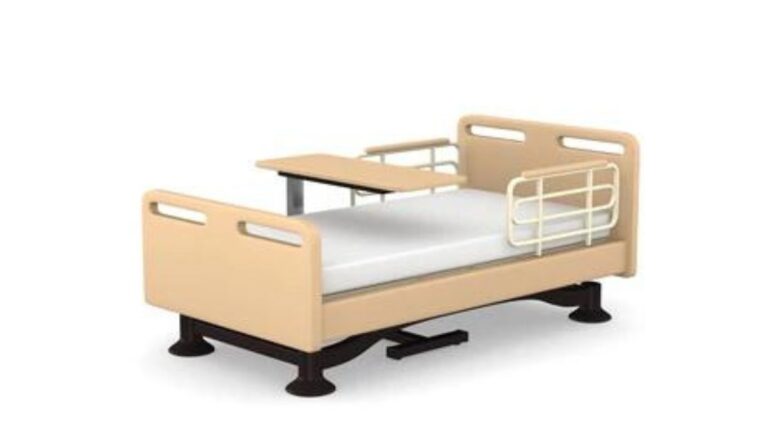Setting up an electric bed at home can enhance comfort and improve your sleep quality, especially for individuals with health issues or mobility challenges. Electric beds offer adjustable positions that can help reduce discomfort and support better sleep. Follow this comprehensive guide to set up your electric bed correctly and safely.
1. Benefits of an Electric Bed
Electric beds come with numerous advantages:
- Adjustable Comfort: Change positions to find the most comfortable one for reading, watching TV, or sleeping.
- Health Support: Alleviate issues like back pain, acid reflux, and sleep apnea by adjusting the bed to a position that reduces discomfort.
- Improved Mobility: Easier to get in and out of bed, which is particularly beneficial for those with limited mobility.
- Convenience: Adjust positions with a remote control, making it easy to change positions without getting out of bed.
2. Preparing for Setup
Before you begin the setup process, make sure you have all the necessary components and tools:
- The bed frame and base
- Mattress (designed for electric beds)
- Remote control
- Power cables
- Instruction manual
- Basic tools such as a screwdriver and a wrench
Also, ensure that you have enough space in the chosen room and that the location has access to a power outlet.
3. Unboxing and Inspecting Components
Carefully unbox all the components and lay them out on the floor. Inspect each part to ensure there are no damages. Check that all necessary parts are included as per the instruction manual. If any components are missing or damaged, contact the manufacturer immediately for replacements.
4. Assembling the Bed Frame
Follow the manufacturer’s instructions to assemble the bed frame:
- Connect the side rails, headboard, and footboard using the screws and bolts provided.
- Ensure that all connections are tight and secure.
- Double-check the stability of the frame by gently shaking it to ensure it doesn’t wobble.
5. Installing the Bed Base
Place the adjustable bed base within the assembled frame:
- Center the base correctly in the frame.
- Secure the base to the frame if the manufacturer’s instructions require it.
- Ensure the base is stable and does not move within the frame.
6. Connecting the Power Cables
Attach the power cables to the bed base:
- Follow the instruction manual for the correct placement of the cables.
- Securely plug the cables into the designated ports on the bed base.
- Route the cables safely to avoid creating tripping hazards.
- Plug the cables into a nearby electrical outlet, ensuring the connection is tight and secure.
7. Setting Up the Remote Control
Attach the remote control to the bed base:
- Depending on the model, the remote may be wired or wireless.
- Follow the instructions for pairing and setting up the remote control.
- Test the remote to ensure all functions are operational. This might include raising and lowering the head and foot sections and adjusting the bed’s height if applicable.
8. Placing the Mattress
Carefully place the mattress on the adjustable bed base:
- Ensure the mattress is designed for use with electric beds, as some traditional mattresses may not flex properly with the adjustable base.
- Align the mattress with the edges of the base to ensure it fits correctly.
- Make sure the mattress is not too heavy for the base to handle, as this could affect the bed’s functionality.
9. Testing the Bed Functions
Use the remote control to test all the bed’s functions:
- Raise and lower the head and foot sections to ensure they operate smoothly and quietly.
- Listen for any unusual noises that might indicate a problem.
- Check for smooth movement and ensure there are no jerky motions or malfunctions.
If you encounter any issues, refer to the troubleshooting section of the instruction manual or contact the manufacturer for assistance.
10. Final Adjustments and Safety Check
Once the bed is functioning properly, make the final adjustments:
- Make the bed with your preferred bedding, ensuring that the sheets and blankets are not too tight, as this can restrict the movement of the adjustable sections.
- Conduct a final safety check to ensure all parts are secure and that there are no loose cables or parts.
- Verify that the remote control is easily accessible and within reach of the bed.
Tips for Maintenance and Safety
To keep your electric bed in optimal condition, follow these maintenance and safety tips:
- Regular Checks: Periodically inspect the bed’s components and connections to ensure they remain secure and functional.
- Cleaning: Clean the bed frame and base according to the manufacturer’s recommendations. Avoid using harsh chemicals that could damage the bed.
- Battery Backup: Some electric beds come with a battery backup feature to allow for adjustments during power outages. Check and replace the batteries as needed.
- Manufacturer Support: For persistent issues or if you need replacement parts, contact the manufacturer for support and guidance.
Conclusion
Setting up an electric bed at home can significantly enhance your comfort and quality of life, particularly if you have mobility issues or health concerns. By following this detailed guide, you can ensure a safe and efficient setup process. Remember to perform regular maintenance checks and follow the manufacturer’s recommendations to keep your electric bed in optimal condition. Whether you’re seeking better sleep quality or easier mobility, an electric bed by gillani engineering can provide the support and convenience you need.
